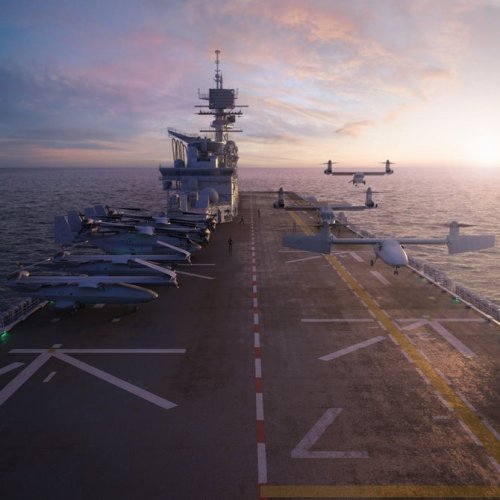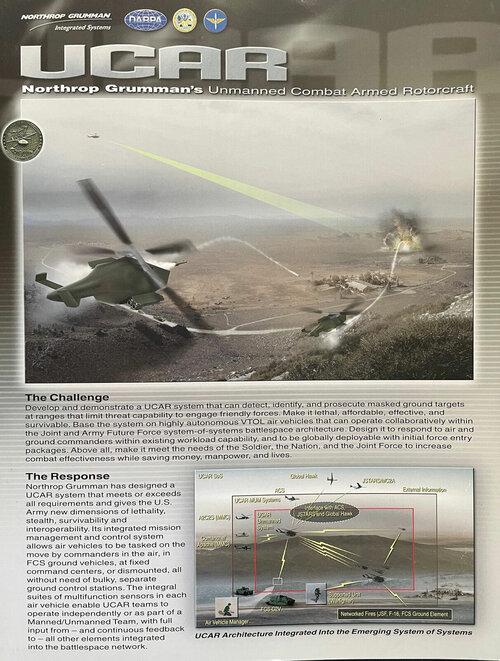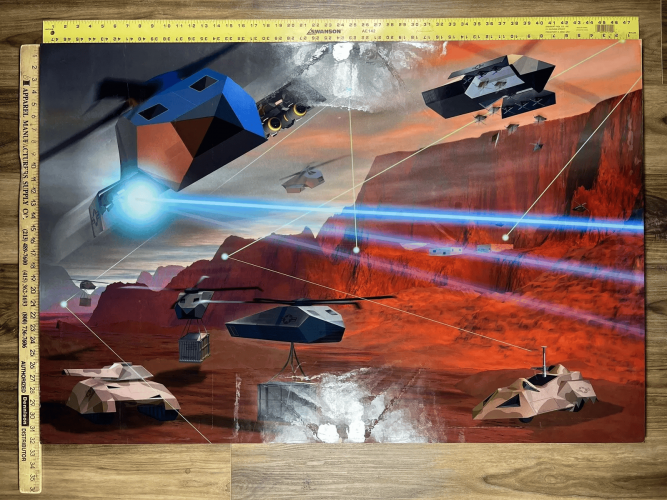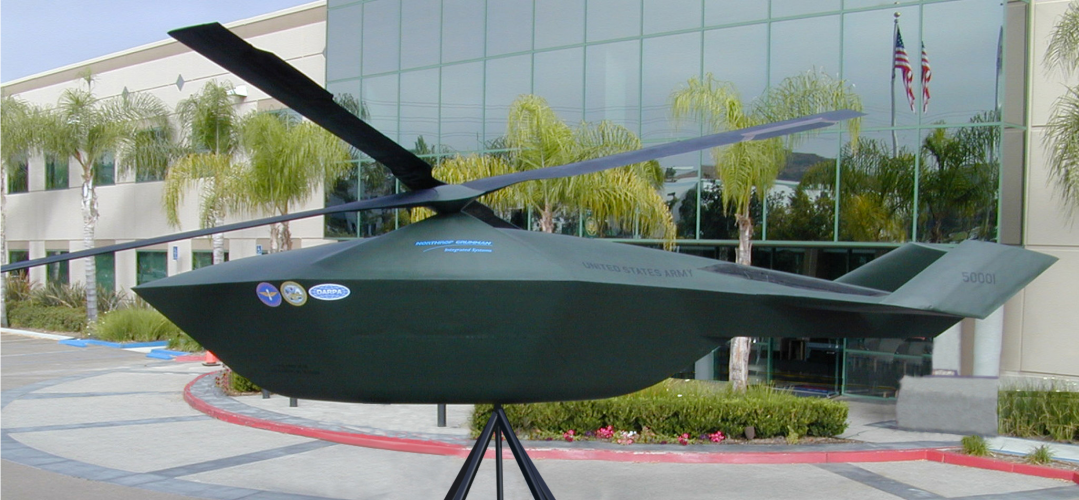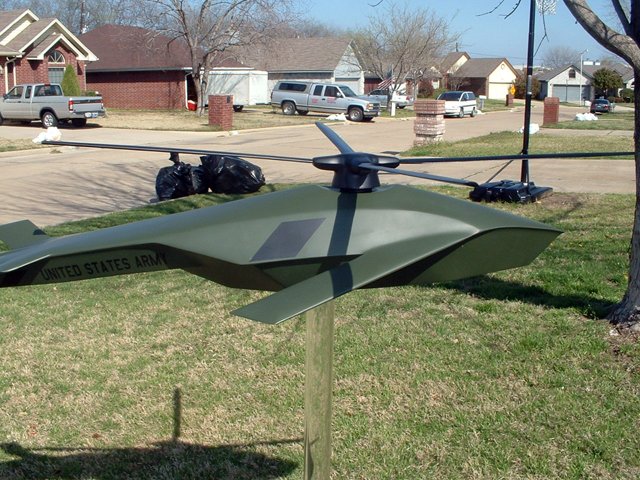You are using an out of date browser. It may not display this or other websites correctly.
You should upgrade or use an alternative browser.
You should upgrade or use an alternative browser.
Unmanned Combat Armed Rotorcraft (UCAR)
- Thread starter Jemiba
- Start date
Bell's V-247 seems to be conceptually similar to the UCAR program although it is somewhat bigger and with fairly large payload/range (2000lbs internal/1000 miles) specifications. It may be chasing any market that arises from the DARPA TERN project. Either would probably fit well with the Independence type LCS and would make for an interesting experiment as a UAV mini-carrier especially as the V-247 mentions an internal sensor package which could serve in an AWACS role.
Attachments
shin_getter
ACCESS: Top Secret
- Joined
- 1 June 2019
- Messages
- 1,105
- Reaction score
- 1,482
With the pivot to pacific and breakthroughs in AI, it appears that this program seems to make more sense than ever.
Was the Northrop Grumman design really suppose to have 1200 mile range and cost <$8mil (2005)? With a vehicle like this, the army can do forward island basing to win the naval war, as funny as it may sound.
and cost <$8mil (2005)? With a vehicle like this, the army can do forward island basing to win the naval war, as funny as it may sound.
FARA that have order of magnitude less range just look funny in comparison.
Was the Northrop Grumman design really suppose to have 1200 mile range
FARA that have order of magnitude less range just look funny in comparison.
- Joined
- 18 October 2006
- Messages
- 4,211
- Reaction score
- 4,919
Since the effort never got beyond the conceptual stage it is hard to comment on the cost although I have to say I doubt they would have been <$8M unit cost. As with most DARPA efforts, cost was not a primary concern so much as demonstration of the technology. The entire project was terminated and almost all of the data sequestered by DARPA within a month of the announcement by the Army that they would not provide funding for the program. Both teams were quite confident in meeting the parameters DARPA and the Army set down.
- Joined
- 28 January 2008
- Messages
- 1,016
- Reaction score
- 2,205
It's too bad UCAR did not move forward and was cancelled, NG and LM both had very good designs. Like other aircraft LO strike programs, UCAR could hit the very high-value assets then the Apaches and Cobras could move in with their larger payloads. Would also be good compliments for the new Army platforms.
- Joined
- 18 October 2006
- Messages
- 4,211
- Reaction score
- 4,919
Wow! Blast from the past. It is a shame that UCAR did not progress. Both teams had made superb progress with their programs. DARPA was very unhappy with the US Army's decision. All of the data was recovered by DARPA and either destroyed or locked away in a wooden box in their Indiana Jones'esque underground warehouse.
- Joined
- 6 August 2007
- Messages
- 3,894
- Reaction score
- 5,972
Wow! Blast from the past. It is a shame that UCAR did not progress. Both teams had made superb progress with their programs. DARPA was very unhappy with the US Army's decision. All of the data was recovered by DARPA and either destroyed or locked away in a wooden box in their Indiana Jones'esque underground warehouse.
A lot of the signature reduction work was applied to later programs. For example, for UCAR they developed the capability to measure small signatures on the pole with dynamic components (rotors, etc) running. No small feat and apparently had not been done before.
- Joined
- 18 October 2006
- Messages
- 4,211
- Reaction score
- 4,919
Good to hear that something came of the project. I did get a cool model out of the deal.Wow! Blast from the past. It is a shame that UCAR did not progress. Both teams had made superb progress with their programs. DARPA was very unhappy with the US Army's decision. All of the data was recovered by DARPA and either destroyed or locked away in a wooden box in their Indiana Jones'esque underground warehouse.
A lot of the signature reduction work was applied to later programs. For example, for UCAR they developed the capability to measure small signatures on the pole with dynamic components (rotors, etc) running. No small feat and apparently had not been done before.
Can anyone confirm the data here:

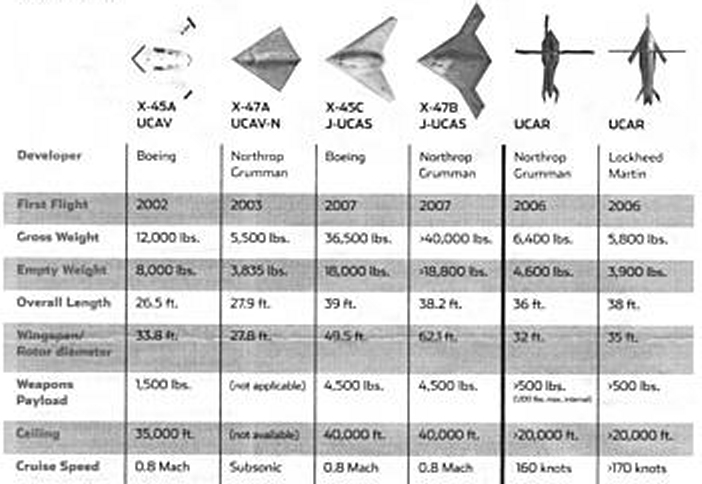
- Joined
- 18 October 2006
- Messages
- 4,211
- Reaction score
- 4,919
The data for UCAR appears reasonable. Unfortunatley when DARPA closed out the program, they ordered all information and technical data returned or destroyed. I will look to see if any non-proprietary info beyond vendor sales brochure is still out there.
The data for UCAR appears reasonable. Unfortunatley when DARPA closed out the program, they ordered all information and technical data returned or destroyed. I will look to see if any non-proprietary info beyond vendor sales brochure is still out there.
Thanks!
- Joined
- 16 April 2008
- Messages
- 9,605
- Reaction score
- 14,493
Some numbers from Flight International in September 2004, quoting the DARPA PM that I don't see them anywhere else in the thread. Not sure if it is directly comparable to the numbers in the chart above, but maybe it helps?

 www.flightglobal.com
www.flightglobal.com

New details of UCAR bids emerge
The US Defense Advanced Research Projects Agency (DARPA) has released new details on Lockheed Martin's and Northrop Grumman's candidates for the Unmanned Combat Armed Rotorcraft (UCAR) programme. A downselect is expected by December.The Lockheed Martin air vehicle is expected to have a combat endurance of 4.5h with a full weapons load, but would also be capable of extended endurance operations of 9.5h. The compound airframe design would have a cruise speed of 170kt (315km/h). Total payload capacity, with weapons and sensors, is 320kg (700lb).
DARPA programme director Don Woodbury says the Lockheed Martin air vehicle "is a derivative of a commercial aircraft, the Bell 407 [helicopter] with much greater capability, a cleaner shape". The wings are removable for storage. The removal of the tail rotor and its replacement by a thruster means the aircraft will achieve "dash speeds of over 180kt".
The Northrop Grumman design is derived from the Kaman K-Max helicopter airframe, retaining twin counter-rotating main rotors. The aircraft would have an empty weight of 2,125kg and an armed take-off weight, based on carriage of four AGM-114 Hellfire missiles in internal bays, of 2,900kg, with maximum take-off weight at 4,000kg. Maximum endurance, using an auxiliary fuel tank, is 10.6h with a flight range of 1,780km (960nm). The aircraft's total length, including rotor blades, would be 11m (35.8ft). Rotor diameter is 9.75m.
Both UCAR teams are offering a combined suite incorporating electro-optic and infrared imaging, laser radar, multimode radar with integrated moving target indication capability, electronic support measures, and nuclear, biological and chemical contaminant detection systems.
The Northrop Grumman ... aircraft's total length, including rotor blades, would be 11m (35.8ft). Rotor diameter is 9.75m.
Matches reasonably closely with the data in the chart.
Scott Kenny
ACCESS: USAP
- Joined
- 15 May 2023
- Messages
- 11,628
- Reaction score
- 14,304
Hrm...
AI tech wasn't there yet, and I'm not convinced that it's there now.
Should be there in less than 20 years, though.
Edit: for whatever reason, I was not picturing these to be AH1 sized...
AI tech wasn't there yet, and I'm not convinced that it's there now.
Should be there in less than 20 years, though.
Edit: for whatever reason, I was not picturing these to be AH1 sized...
Last edited:
BOEING UCAR ARTIST'S IMPRESSION


Rare Boeing UCAR Unmanned Combat Armed Rotorcraft Prototype Original Concept Art | eBay
Contenders for the UCAR contract included Lockheed Martin, Boeing, Northrop Grumman, and Sikorsky. Operational cost reductions were expected to be achieved at least in part by reducing the number of personnel required to maintain and operate the machine.
www.ebay.com
- Joined
- 1 April 2006
- Messages
- 11,390
- Reaction score
- 10,274

NORTHROP GRUMMAN UNMANNED COMBAT ARMED ROTORCRAFT [UCAR] CHALLENGE & CAPABILITY | eBay
Unlike other unmanned aerial vehicles, however, the UCAR will not have a dedicated ground station. Capable of autonomous mission planning while in flight, the UCAR will request guidance from a human operator only for tasking and final weapons authorization.
www.ebay.com
Scott Kenny
ACCESS: USAP
- Joined
- 15 May 2023
- Messages
- 11,628
- Reaction score
- 14,304
I'm still not convinced that that AI autonomy tech is quite there yet. Especially the target ID algorithms.No with CCAs, UCAR should return, would be completely viable now.
10 years from now to start the program, delivery in ~2040-50, though? Oh, hell yes UCARs will be all over the place!
- Joined
- 28 January 2008
- Messages
- 1,016
- Reaction score
- 2,205
Terminator Reborn!Saved both images from the listings. One listing has been sold, and sold listings disappear after 3-4 months.
Scott Kenny
ACCESS: USAP
- Joined
- 15 May 2023
- Messages
- 11,628
- Reaction score
- 14,304
Does anyone know of STL files for either UCAR proposal? I'd really like a couple of models in 1/100 scale...
- Joined
- 18 October 2006
- Messages
- 4,211
- Reaction score
- 4,919
Sadly there is not much information out there on UCAR. When the U.S. Army terminated the program DARPA boxed up everything and took it to their Indiana Jones underground warehouse. In all seriousness most of the data for the program was destroyed.
- Joined
- 28 January 2008
- Messages
- 1,016
- Reaction score
- 2,205
I would like one of each for my front yard thank you very much.These were made years ago by a guy in Texas, he made models for all the aerospace companies. The images were from 2004 based on the data of the files that were on an old drive of mine.
View attachment 766600View attachment 766601
Will try and find more details and revert.
Regards,
Similar threads
-
-
US Navy 1951 Observation / Liaison helicopter competition
- Started by Stargazer
- Replies: 16
-
Quad-A 2015: US Army wants to hurry rotorcraft DVE tech
- Started by Triton
- Replies: 0
-
Lockheed P-420 'LightStar' UAV
- Started by Mr London 24/7
- Replies: 18
-
Westland remotely-piloted helicopters (RPH)
- Started by Stargazer
- Replies: 7

